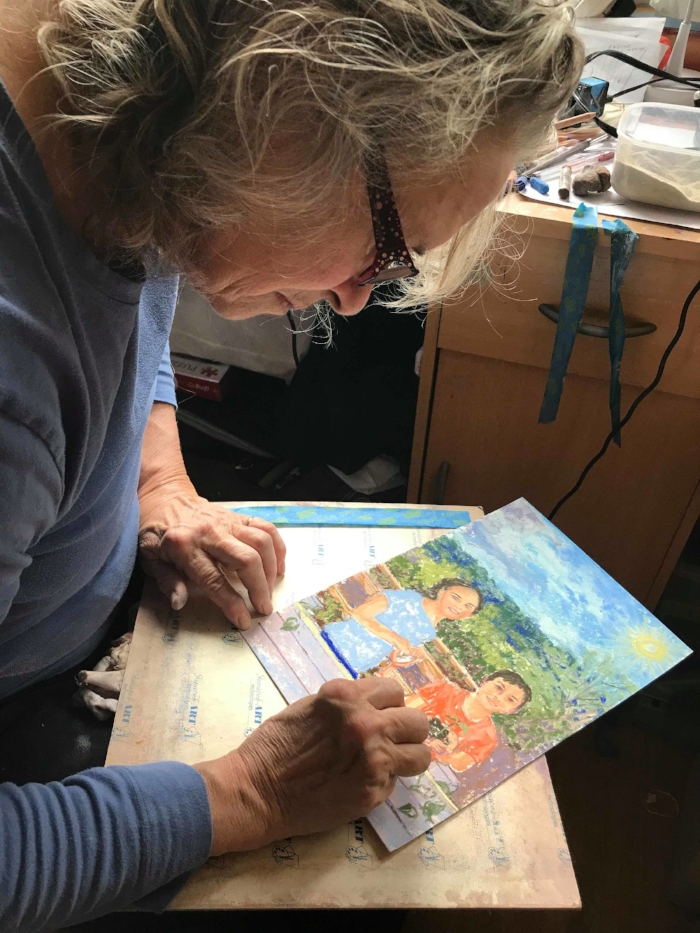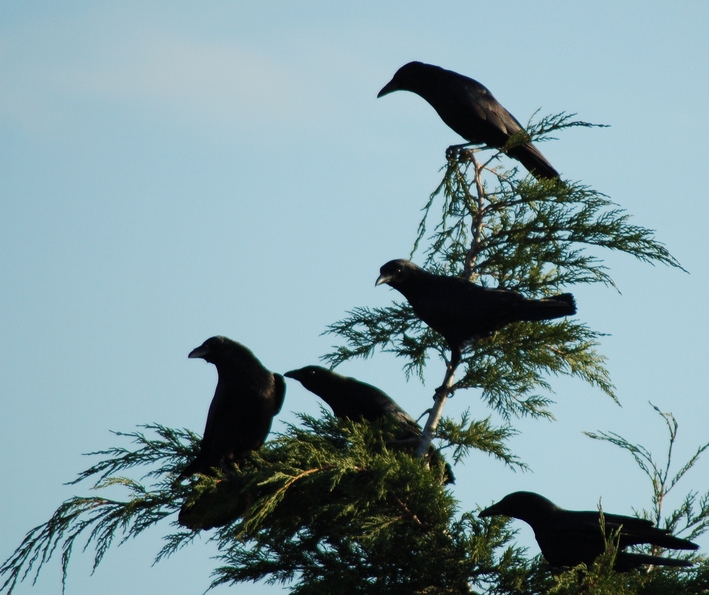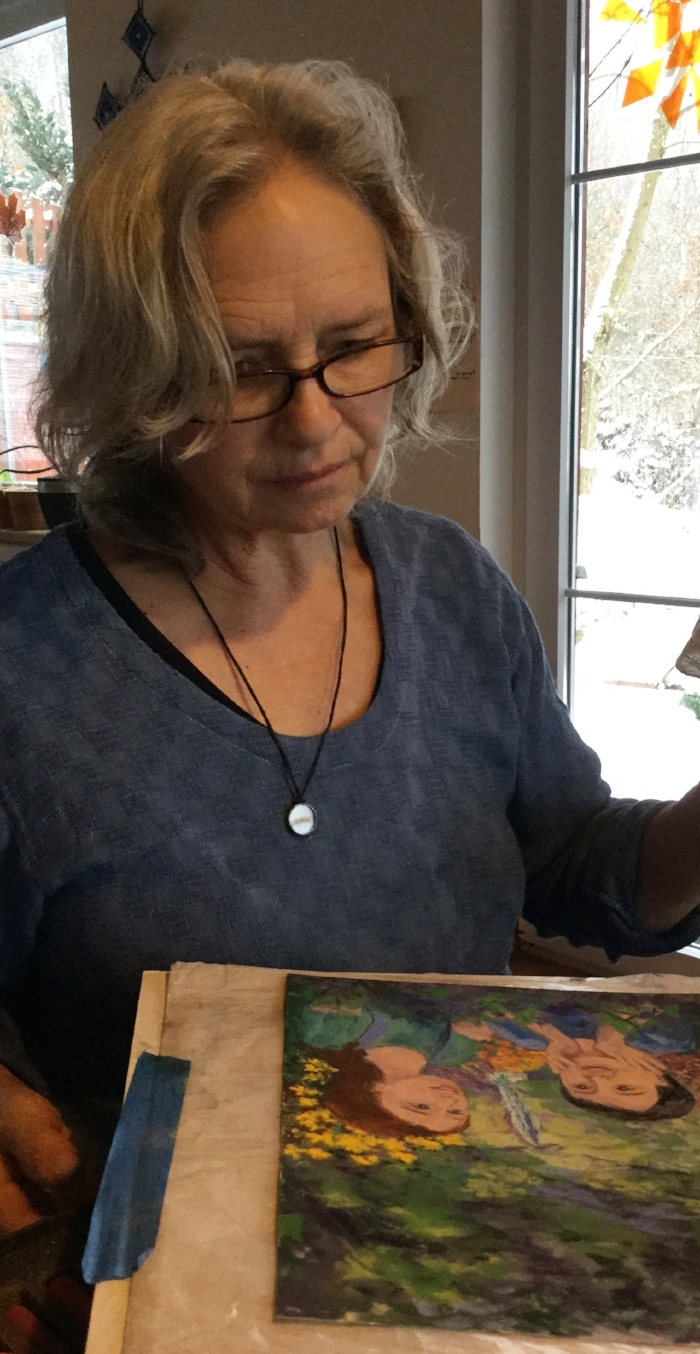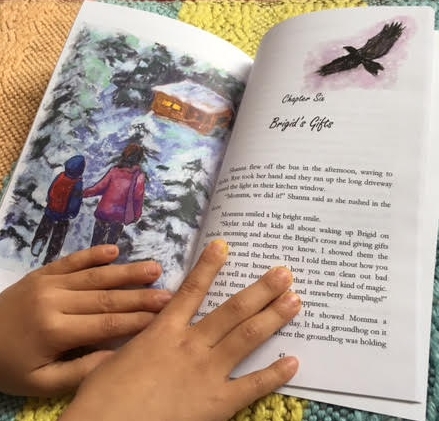What they need to grow: An interview with children's illustrator Julie Freel
/Here is another interview with Children's Wheel of the Year illustrator, Julie Freel. This time I want to let you in on her other life, which is as an expert on the emotional development of children. Her input has also been very helpful on the writing side of the books, ensuring that the stories and dialogue are helpful to children, even as they entertain.
Welcome back to the blog, Julie.
How is the illustrating for this project going?
It's getting easier and more fun.
You work with children for your day job, right?
I am a Licensed Clinical Social Worker. I've provided services to children and families for 25 years.
We always say plants need soil, water and sunlight to grow. Can you sum up what children need to grow and flourish?
Kids need safety and security to survive. To thrive, children need a reliable someone paying attention, providing care and nurture. To flourish, kids need motivational opportunities such as new experiences and ideas as well as opportunities to develop skills and talents.
What role does self-confidence play?
At a certain age, kids need challenges. Shanna and the Goddess is a story about how challenges help to build confidence. Giving children an opportunity to meet challenges helps them develop a healthy sense of self, challenges that are genuinely meaningful within the context of their lives.
The opportunity to be needed and the feeling that your contribution is valuable can develop a sense of self, if it's not above your developmental level. A five-year-old without an available parent who has to figure out how to get food for his three-year-old sister isn't being provided with a helpful challenge because it’s beyond their developmental level, causing later emotional problems. But if it is a challenge that causes you to stretch and prove your abilities, where you get the opportunity to test your real limits, it builds confidence.
Self-confidence is what underlies motivation and the ability and willingness to try things, make mistakes, learn and grow. Many people have abilities and exceptional talents but are unable to find the motivation to express them. Some people say it's laziness but I would say it has more to do with lack of self-confidence. Self-confidence makes life more fun.
What is self-regulation and why is it important to children's development?
Self-regulation is the ability to manage our emotions and behavior within the context of the expectations in our situation. It includes emotional regulation; or the ability to manage emotions, to calm oneself when upset and to adjust to changes. These skills allow us to direct our behavior towards goals despite the unpredictability of the world and flux of our own feelings. Without adequate emotional regulation, children are less capable of succeeding socially and academically. Our abilities to self regulate are largely developed before the age of three, including prenatal development. With a safe environment and responsive caregivers, children develop the capacity to calm themselves under stress. Without a safe environment, our brains develop patterns of hormonal responses that last a lifetime and take a great deal of effort to manage, impacting our abilities to be fully present to our life experiences.
Do you think self-regulation is particularly important because of the emphasis of today's society on academic success in a sedentary structure?
Self regulation is important in any society. There is a difference between being able to regulate ones’ emotions and the ability to sustain attention. A societal emphasis on academic success within a sedentary structure is not conducive to sustained attention for many children. But being able to regulate emotions is essential to social connectedness and success with any endeavor that requires sustained effort. Our abilities to self regulate directly relate essential relationship skills: to our ability to be present to our own emotional experience and that of another person.
What are some ways to help kids who struggle with self-regulation in school?
It depends on the need. It is helpful to have a calm-down place where kids can self regulate. Children benefit from learning mindfulness skills such as body awareness and yoga. Emotional intelligence skills can be taught; for example, learning to identify and name your feelings and expressing them to others calmly. These skills can be integrated into social relationship skill building. Children need to be taught how to express themselves in ways that are sensitive to others and help in problem solving their daily challenges.
Help kids talk about important issues--such as bullying, social exclusion, difficulties keeping up
academically--with each other. Normalize the need for calming down and the need to help each other calm down. Teach children how to be there for each other when someone is having a hard time.
In addition, doing projects--just getting out and doing things--is a huge predictor of future success for children. That's one reason why too much time sitting in front of video games is such a problem for children. They aren't having opportunities for building the many skills that are necessary steps toward self regulation, confidence and competence.
The book Shanna and the Goddess has a lot about children gardening. Do kids gain more from gardening than just technical skills like other chores?
Gardening helps children connect to nature and the earth, offering a source of calm and connectedness to the environment as well as to one’s family. Nature is one of the greatest sources of internal peace and satisfaction.
With so many demands today--academics, sports, foreign languages, creative enrichment opportunities for kids and then those chores--do you have any advice for parents hoping to include some sort of spirituality in their children's lives?
If it is a part of your life, spirituality will naturally be a part of your children's lives. If you want spiritually based celebrations, you have to make that choice and put it into practice for yourself and your family. Living your spirituality has to be integrated into your daily life as well as your celebrations, in order to be meaningful.
Thank you so much for your perspective on this. And happy painting!












































